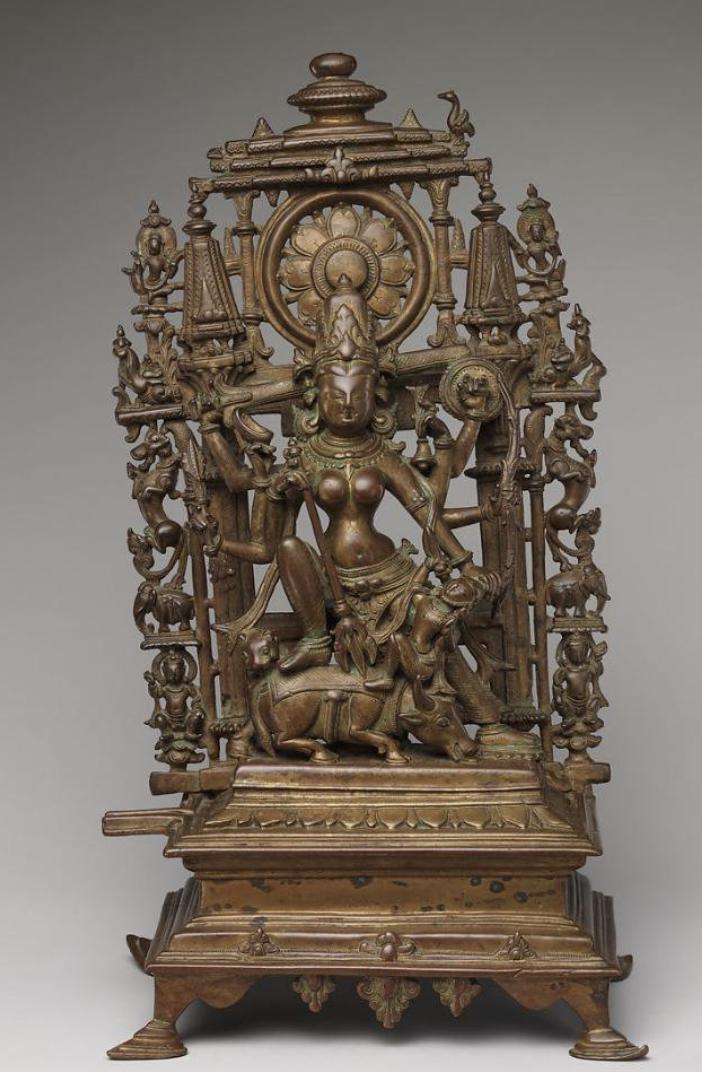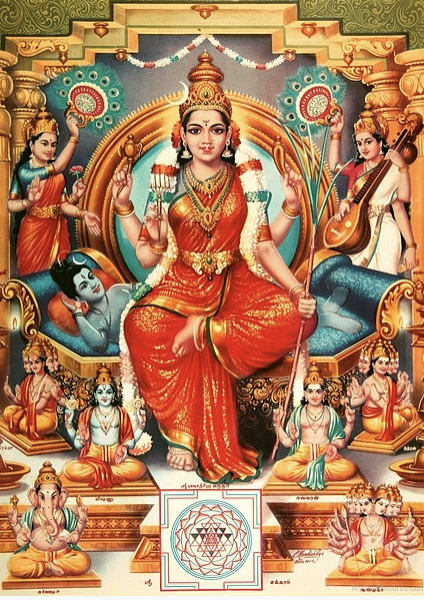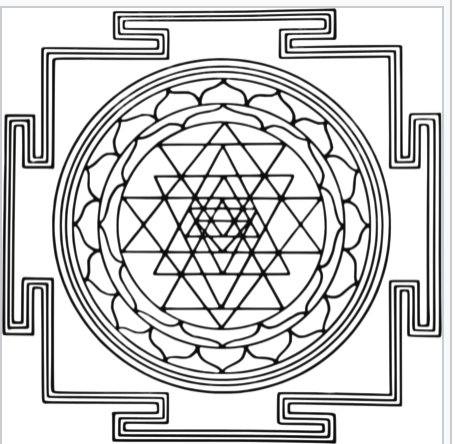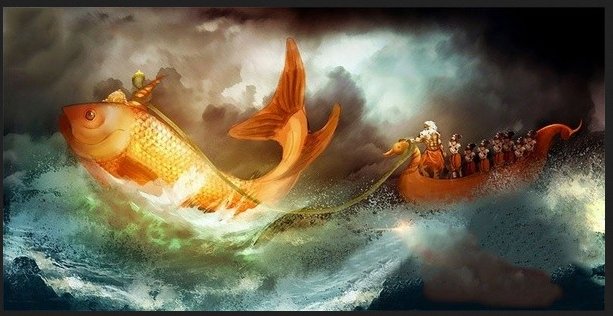While there is a strong association of the festival with Shri Rāmachandra, the primary theme of the festival in much of India is the worship of the feminine power - the Goddess
But it is also a much misunderstood theological tradition
While it is true that individuals who exclusively regard themselves as "Shakta" are concentrated in Eastern India today, the broader tradition of worshipping the feminine covers all of Hindu society
Hey...this isn't "high brow". It can't be "Vedic". This isn't mainstream
These are medieval corruptions etc
Reactions that is mostly ill-informed
Roots that are very much in Vedic literature
It is also a reaction that does not bake in the very large mass of theological and paUrANika works dedicated to the Devi
to Lalitha Sahasranāmam in Brahmāṇḍa Purāṇa
From Devī Bhāgavatapurāṇa in the early middle ages to the mass of commentarial work on Shri Vidya by Bhāskararāya Makhin in 18th century
But a major intellectual movement that some of the finest theologians engaged in, for nearly two millennia
Revering the feminine is very much present in the Vedas
As evidenced by the Devīsūkta , the 125th sukta in Mandala 10, Rig Veda
It is not a new fangled thing, nor something subaltern that is lacking in legitimacy
ecs.umass.edu/ece/janaswamy/…
"Kali, Karali,Manojava,and Sulohita and that which is Sudhumravarna, as also Sphulingini, and the shining Visvaruci –these are the seven flaming tongues"
Adi Shankara adds in his bhashya that these tongues are meant for devouring clarified butter offered as oblation
The most notable example being the worship of Durga by Yudhishtira in Virata Parva and Arjuna in Bhishma Parva
Note the invocation
sacred-texts.com/hin/m06/m06023…

An unequivocal worship of the Goddess as the Supreme spirit
The worship of Durga in the epics does suggest that the Markandeya Purana represents the maturation of a tradition, not its incipience
The centerpiece legend is that of Durga leading the battle against the buffalo Demon - Mahishasura
A legend deeply ingrained in Indian culture
But this is no doubt a pan Indian legend, with its appeal going way beyond pockets in Eastern or Southern India
But archeological record does suggest that legends like Mahishasura-slaying were pan Indian in their appeal
It has a theological mooring where the feminine power is the principal creative force
The text incorporates Sankhya philosophy wherein the Devi embodies all three Gunas - Sattva, Rajas and Tamas (latter represented by Kali)
But in my view this is a somewhat stark contrast to Vaishnavite traditions where we tend to associate the divine with the Sattva Guna (the attribute that epitomizes balance, harmony, purity, serenity)
The Lalitha Sahasranama is not, again, an isolated Stotra. But a part of the much larger BrahmANDa purANa (dating to 1st millennium CE)
Here's a rendering of the Lalitha Sahasranama on youtube. With over 3MM views
With a notable commentary being that of Bhaskara-raya the great Marathi Tantra expert from the Tamil country in the 18th century
Commonly attributed to Adi Shankara
An important Shakta text that appeals to numerous Non Shaktas
And many of the texts from that period remain with us today, as living texts
With Devi mahatmyam being the foremost among them
Devi Bhagavata Purana being the preeminent text that adds more detail to much of the theology in the older Devi mahatmyam
All varied and distinct
Kali, Tara, Tripura Sundari, Bhuvaneshvari, Bhairavi, Chhinnamasta, Dhumavati, Bagalamukhi, Matangi and Kamala
Maybe someone can fill in on why that's the case
The Srikula traditions focused on Tripura Sundari / Lalita Devi. Predominant in Southern India
The Kali-kula traditions of Eastern India focused on Durga / Kali
The principal texts for the Srikula traditions are Lalitha Sahasranama, and Saundarya Lahari, which we have touched upon
While the Kali-kula tradition focuses more on Devi mahatmya (a.k.a. Chandi-Patha)
One of its major doyens being the brilliant Bhaskara-raya, a theologian with over 40 works to his credit
What marks him out is his theological range
But he was also a major Tantra exponent - the author of Sethubandha, a treatise on Tantra worship focused on Tripura Sundari
While the northern traditions focus more on the lore and the icons, the southern traditions are focused more on Sri-Yantra - a geometric figure
Something that I haven't done
But curious to hear from anyone who might have read Sethu-bandha, his major work
But even in our own times, in the 20th century, the tradition has continued to evolve
But individuals who regard themselves as "Shaktas" exclusively are for the most part in Eastern India, though mother goddess worship is pan-Indian
Notably Ramakrishna Paramahansa, and Swami Vivekananda
But Vivekananda in his own writings wrote more on Vedanta than on Tantra
An interesting figure being John Woodroffe (1865-1936), a major western scholar on Shakta tradition
His works include The Serpent Power, Hymns to the Goddess, Shakti and Shâkta
The worship of the feminine in varied forms has occupied the Indian mind, starting with the Rig Veda Mandala 10 to Santoshi Mata in our times
A tradition that is pan-Indian yet not homogenous
And a tradition that continues to challenge us in ways that some of the other traditions don't.
We will end on that note
Is the worship of the feminine something abjured in Vaishnava traditions
Of course not, but that would require a separate thread. Starting perhaps with Sri-Suktam in RV, and discussing the Maha Lakshmi and her centrality in Sri-Vaishnava theology
upanishads.iitk.ac.in
Here's a more in-depth look at the tradition from @subhashkak1 I came across today
swarajyamag.com/culture/the-gr…













